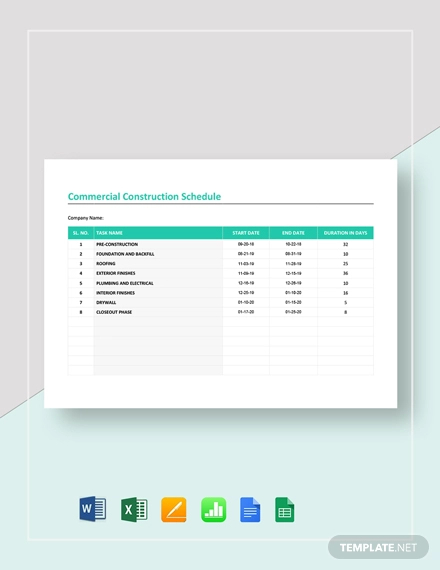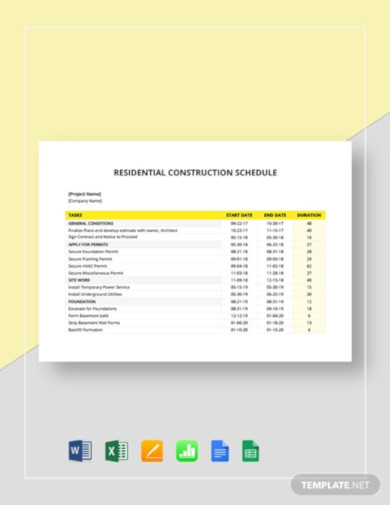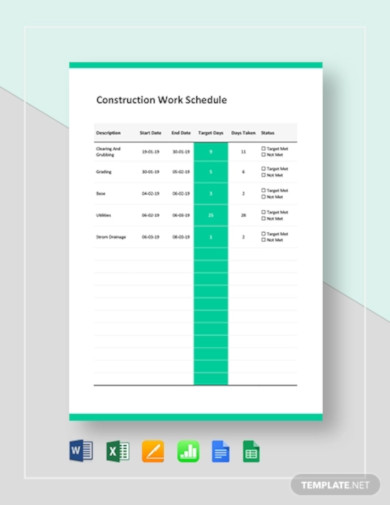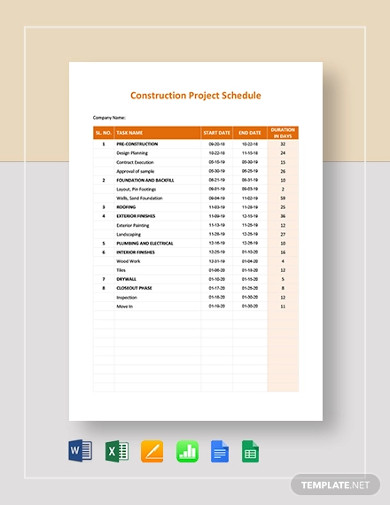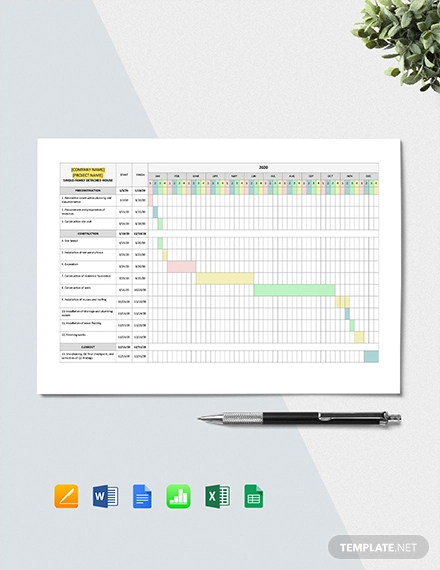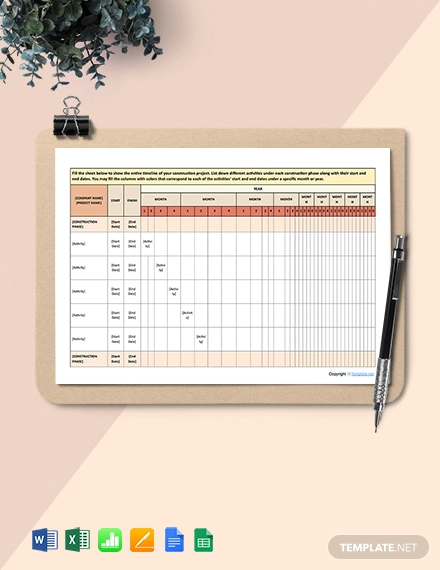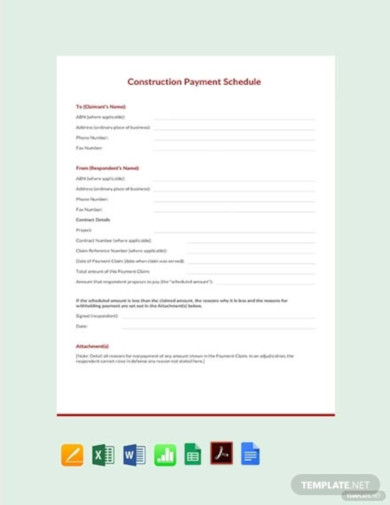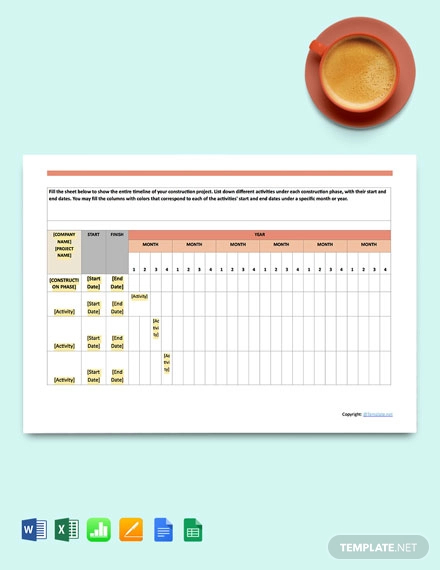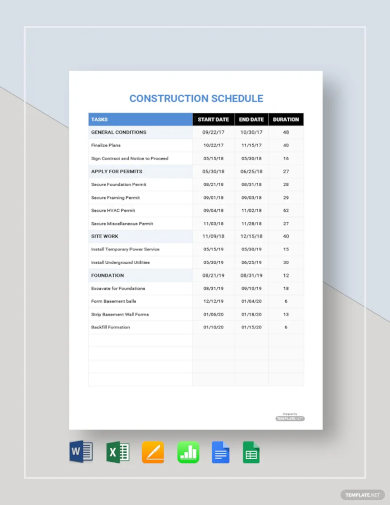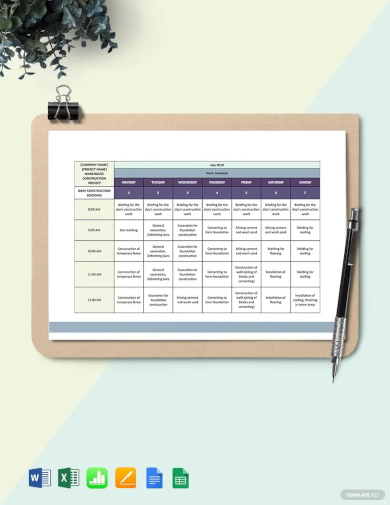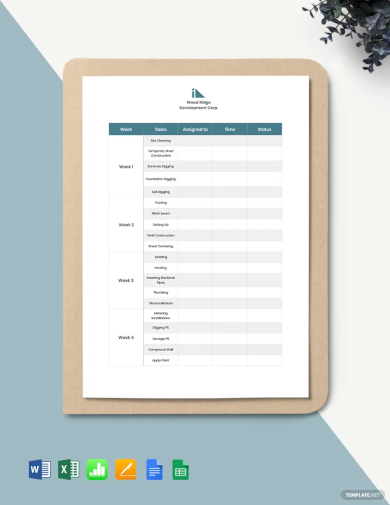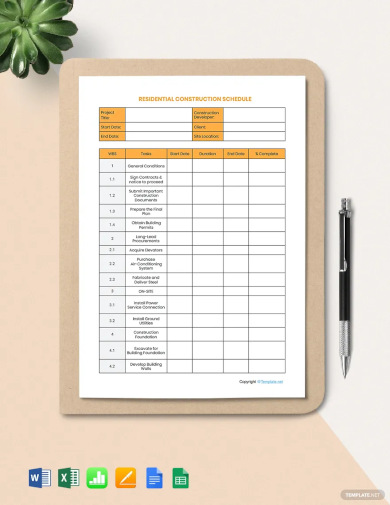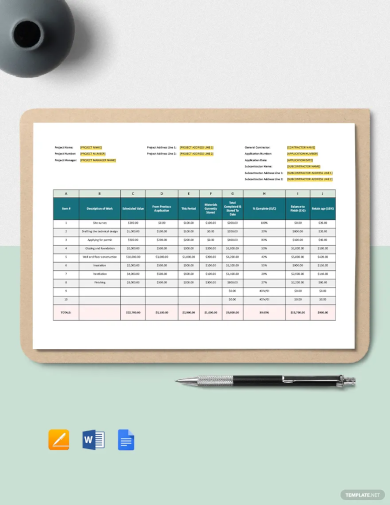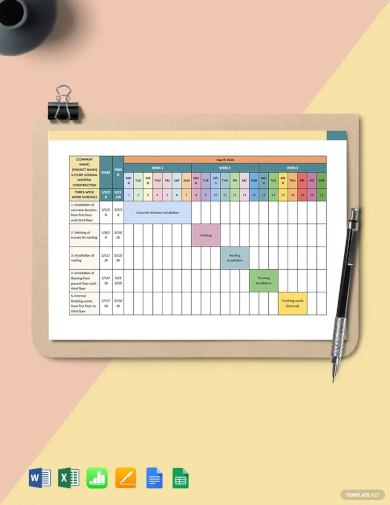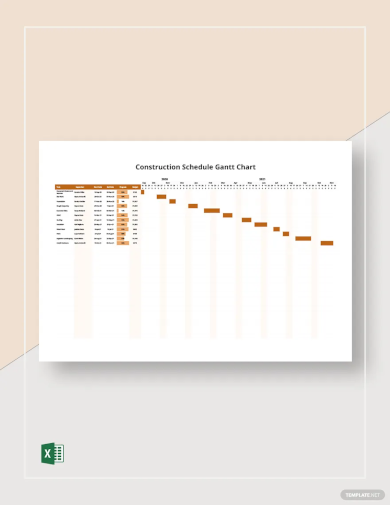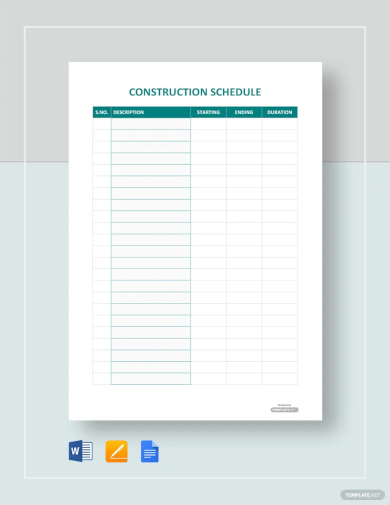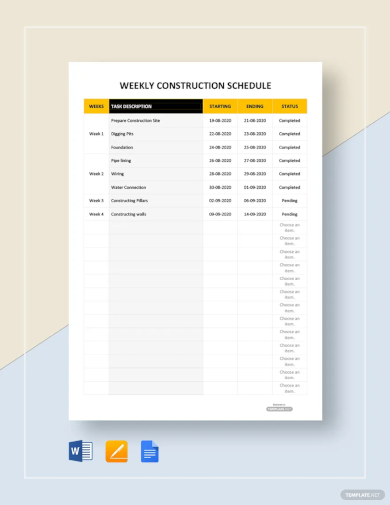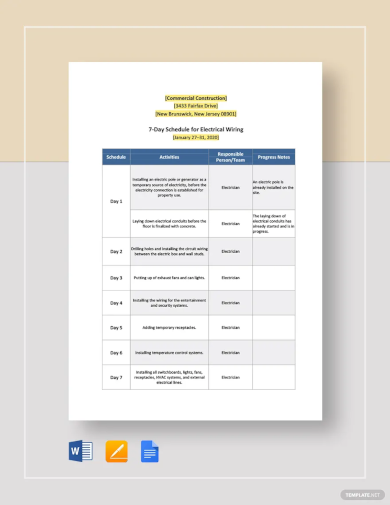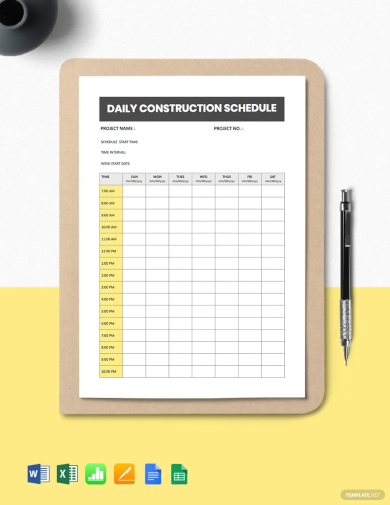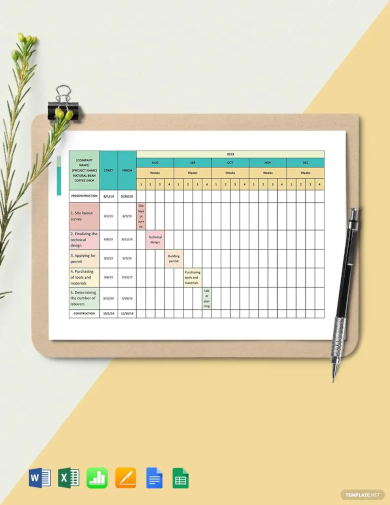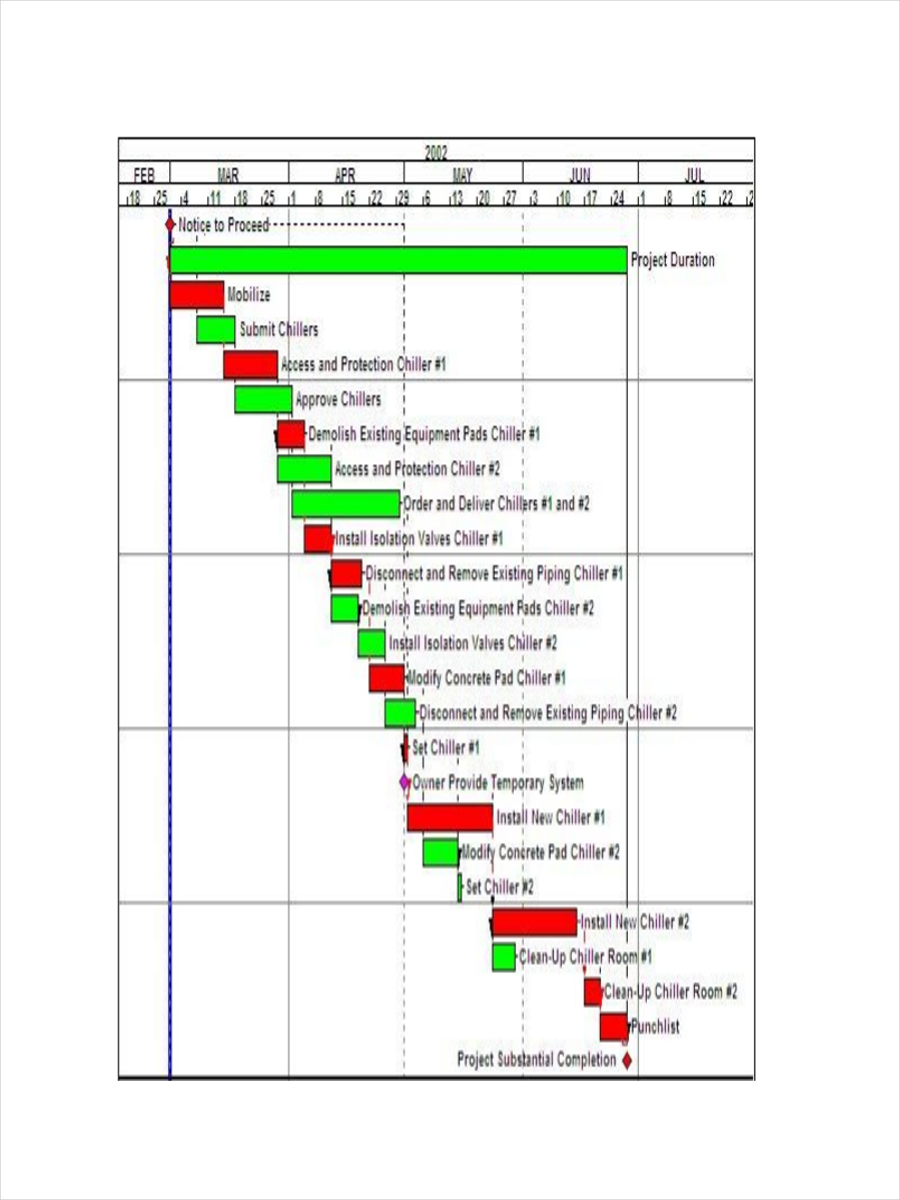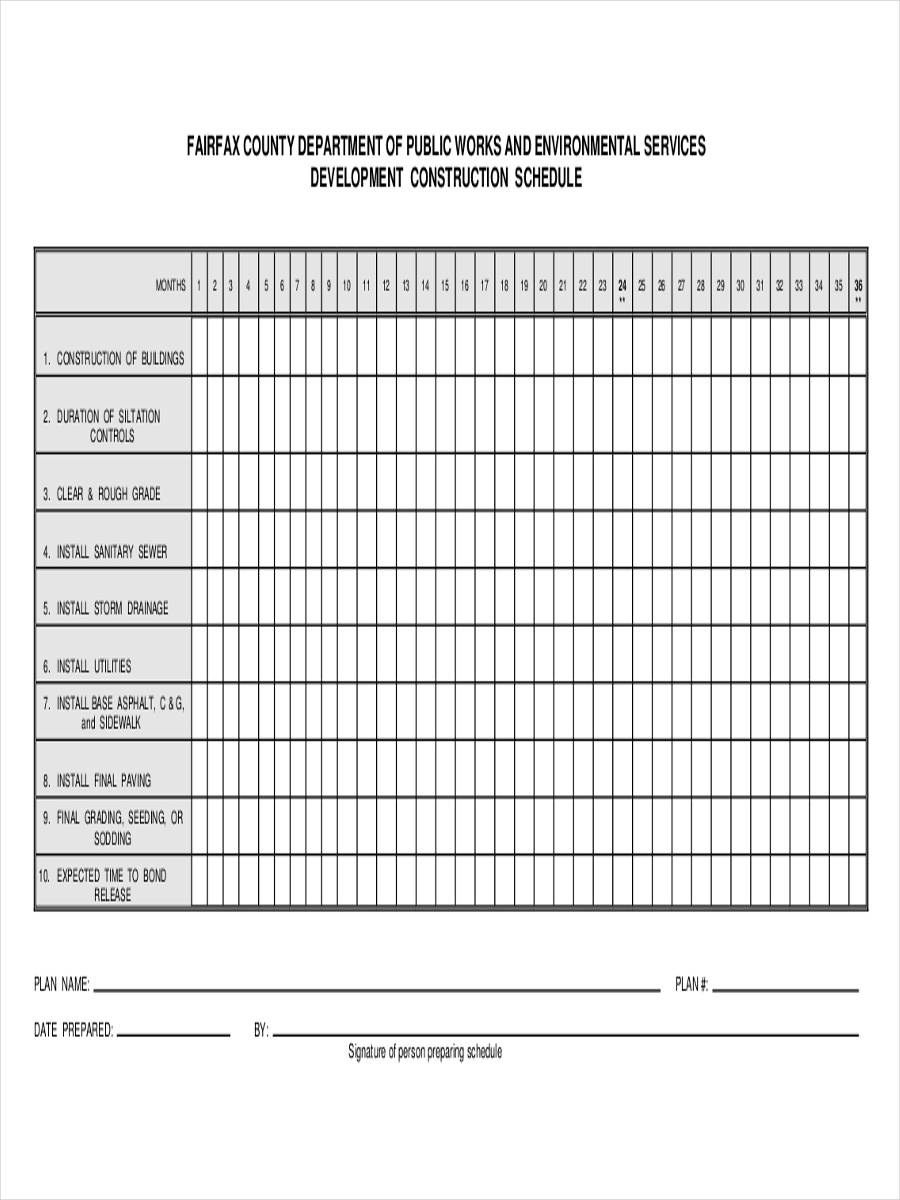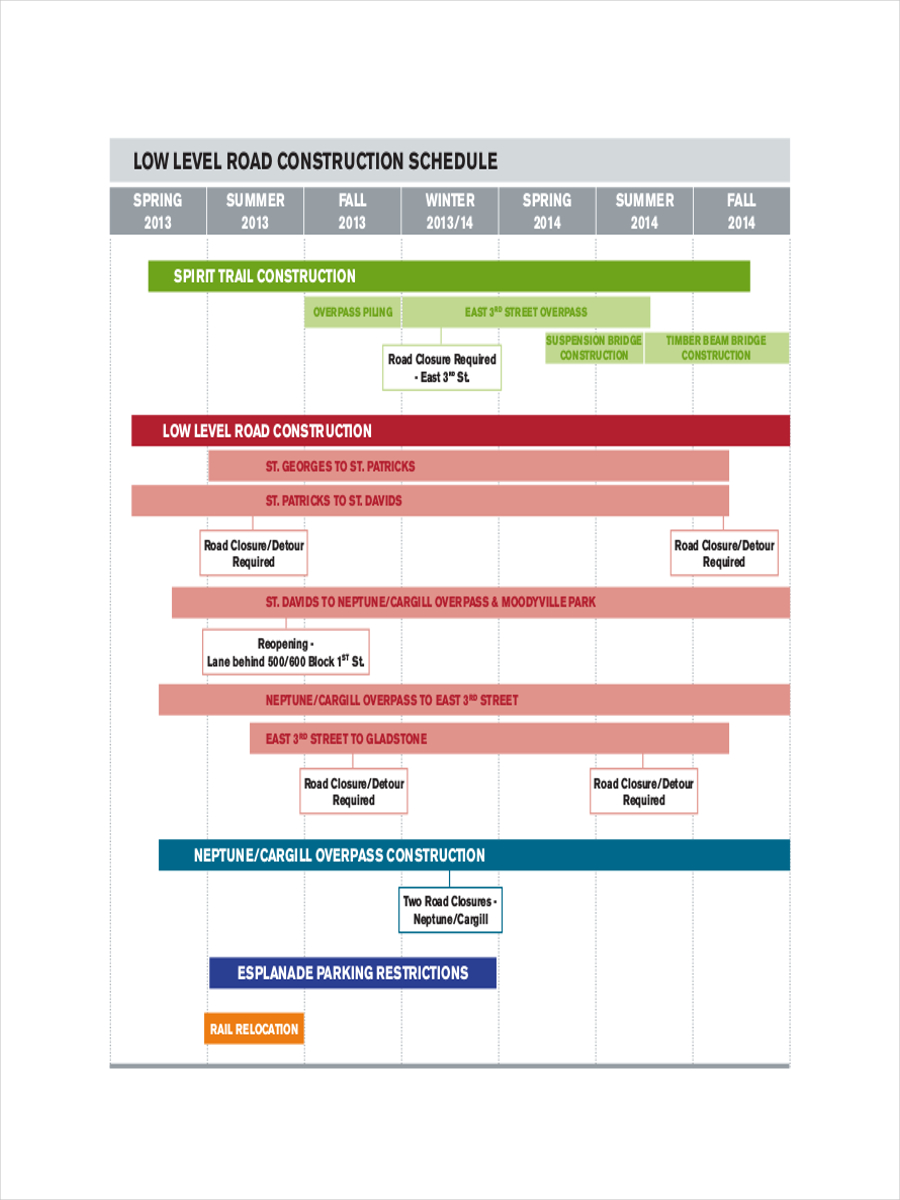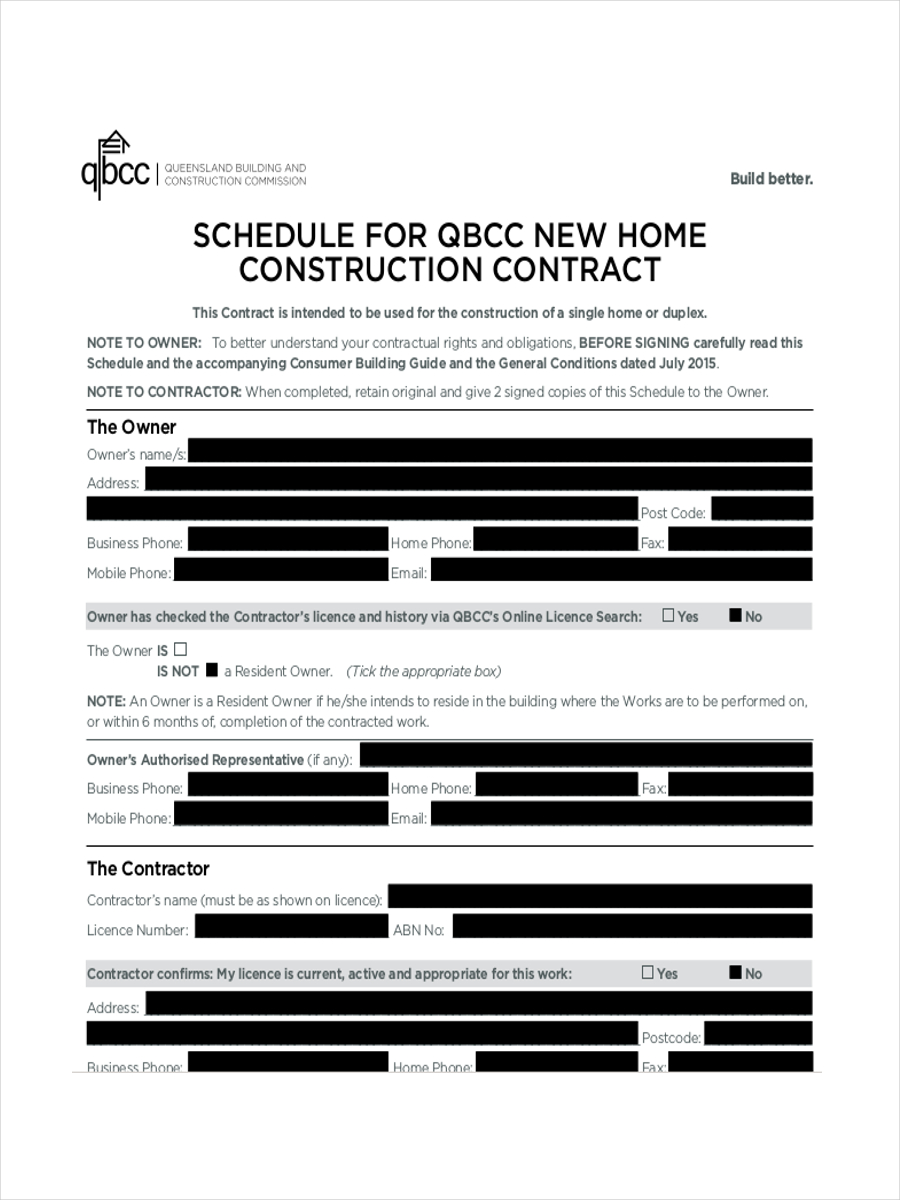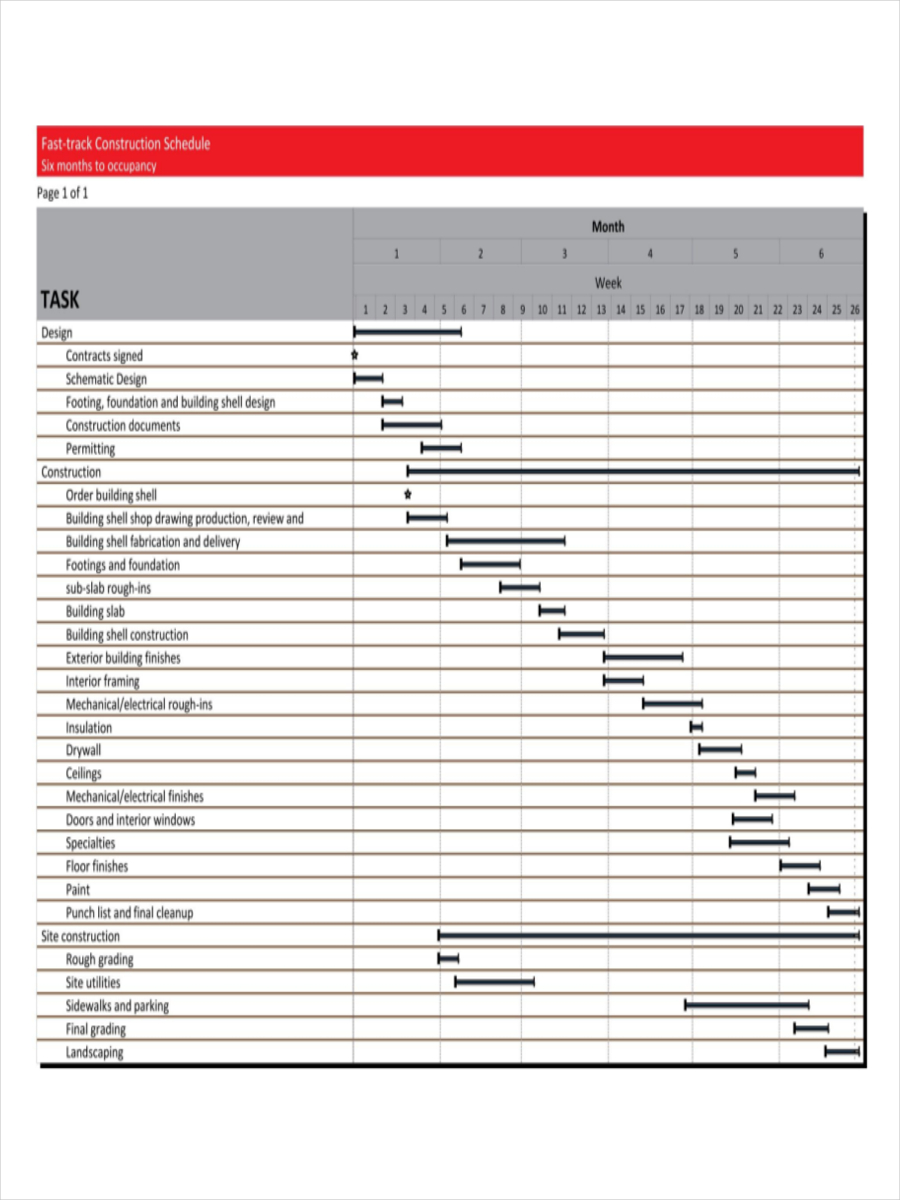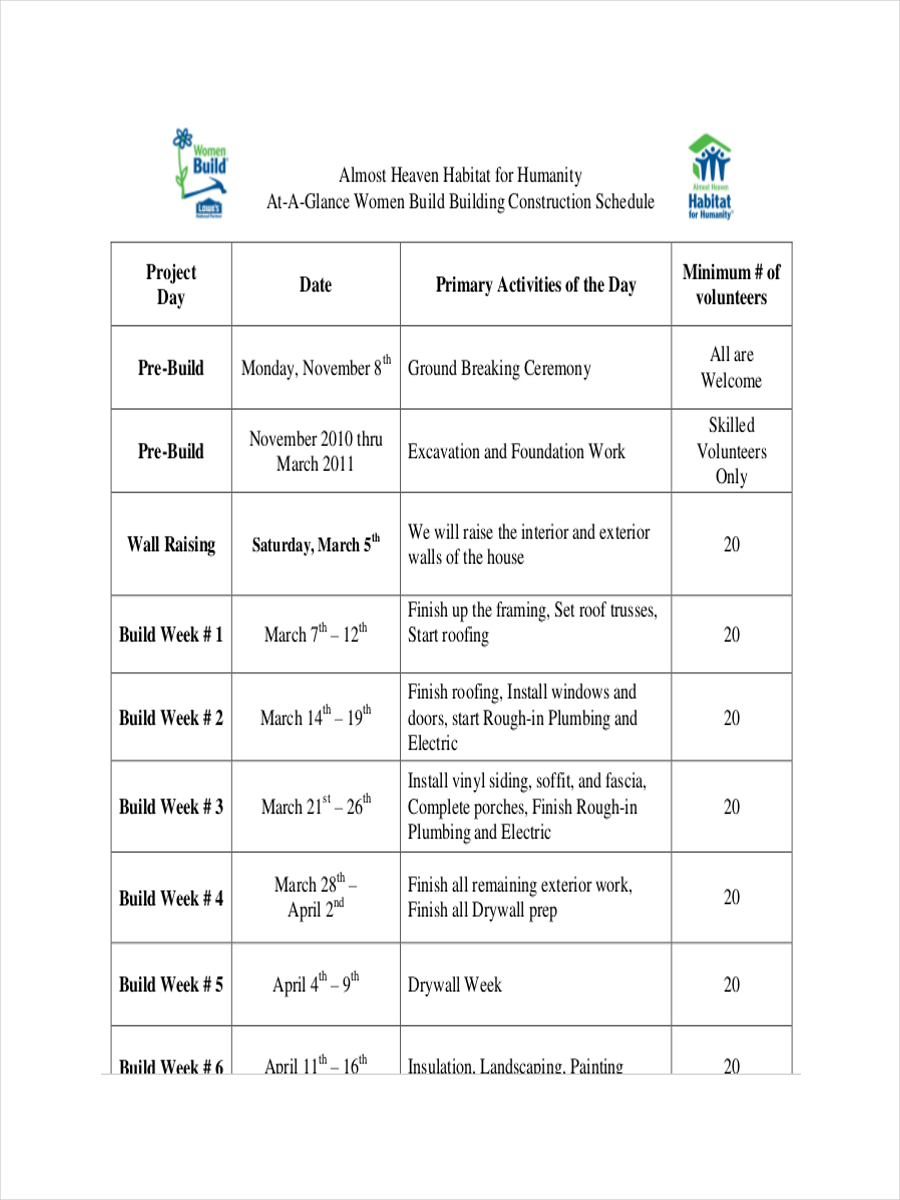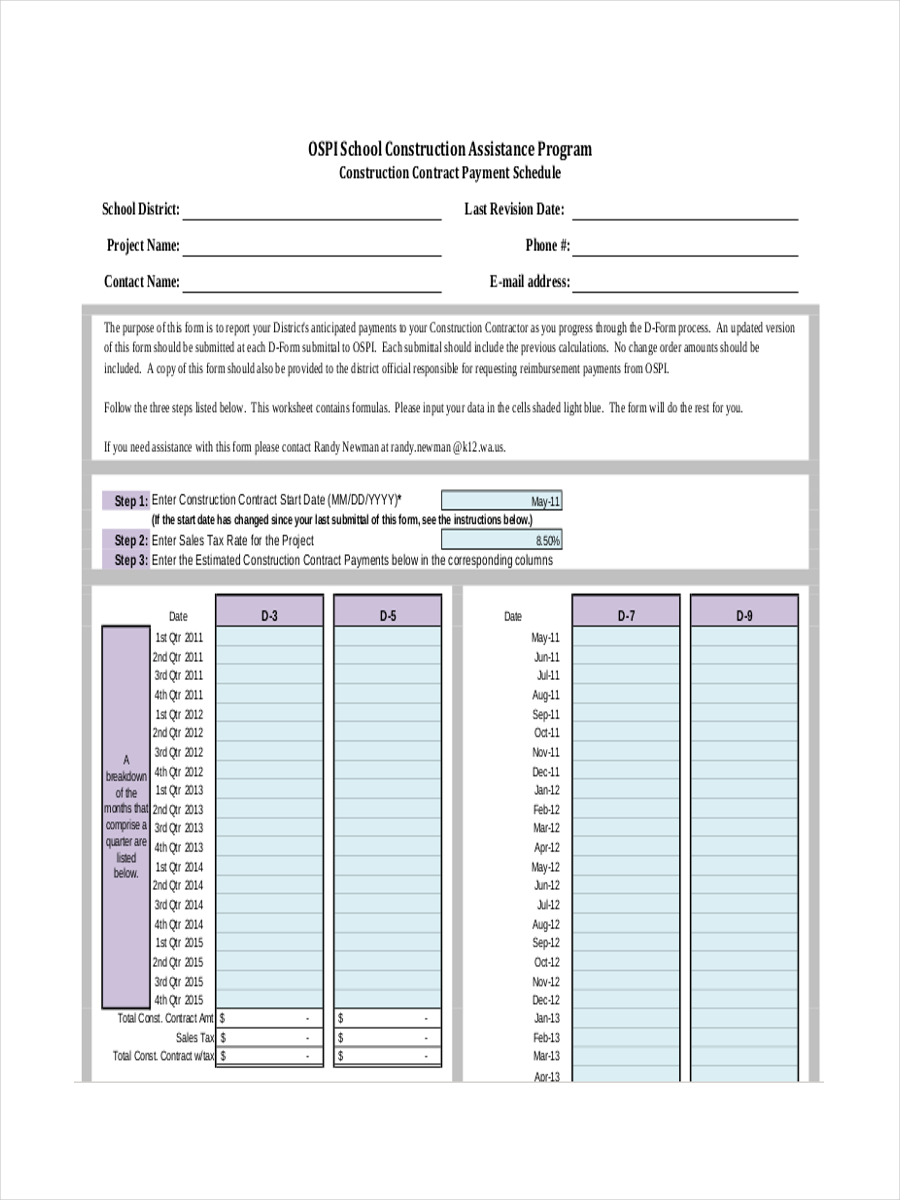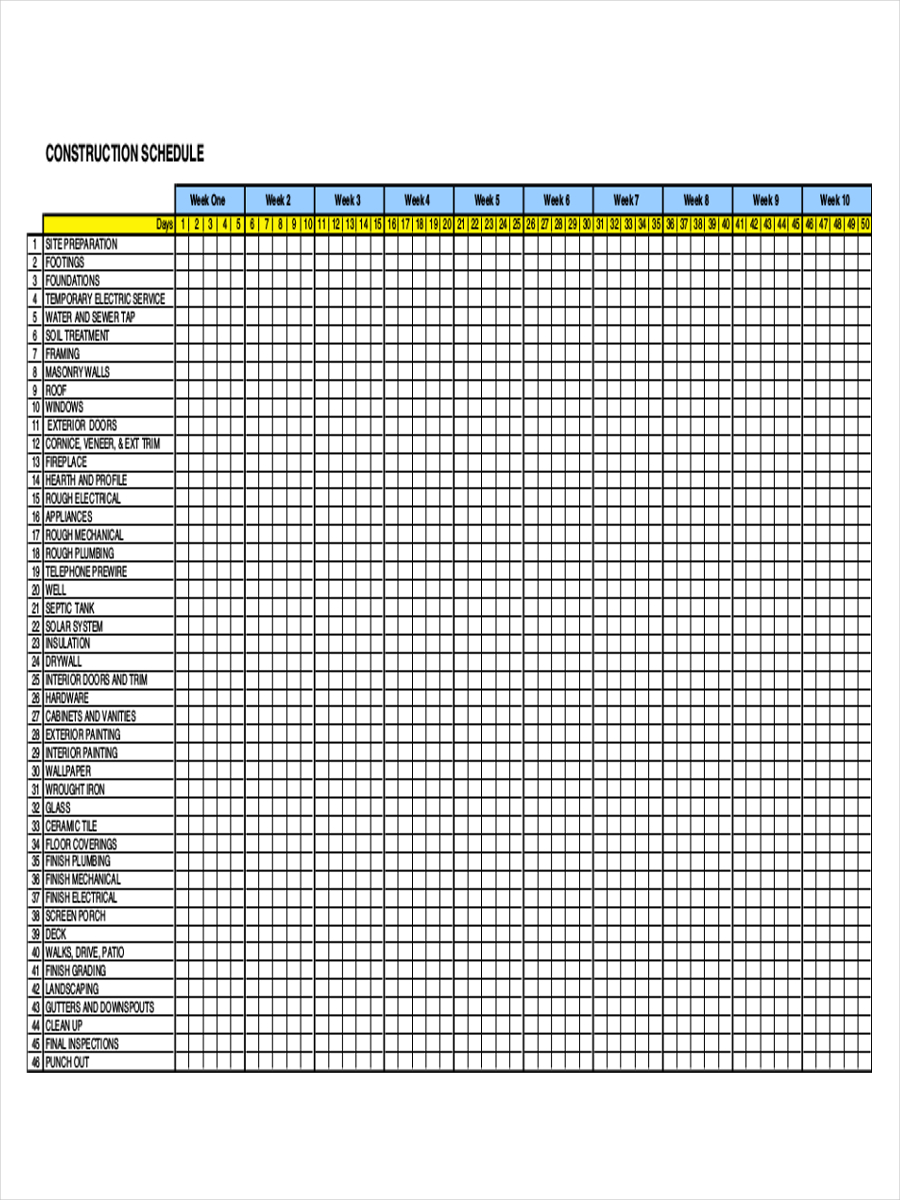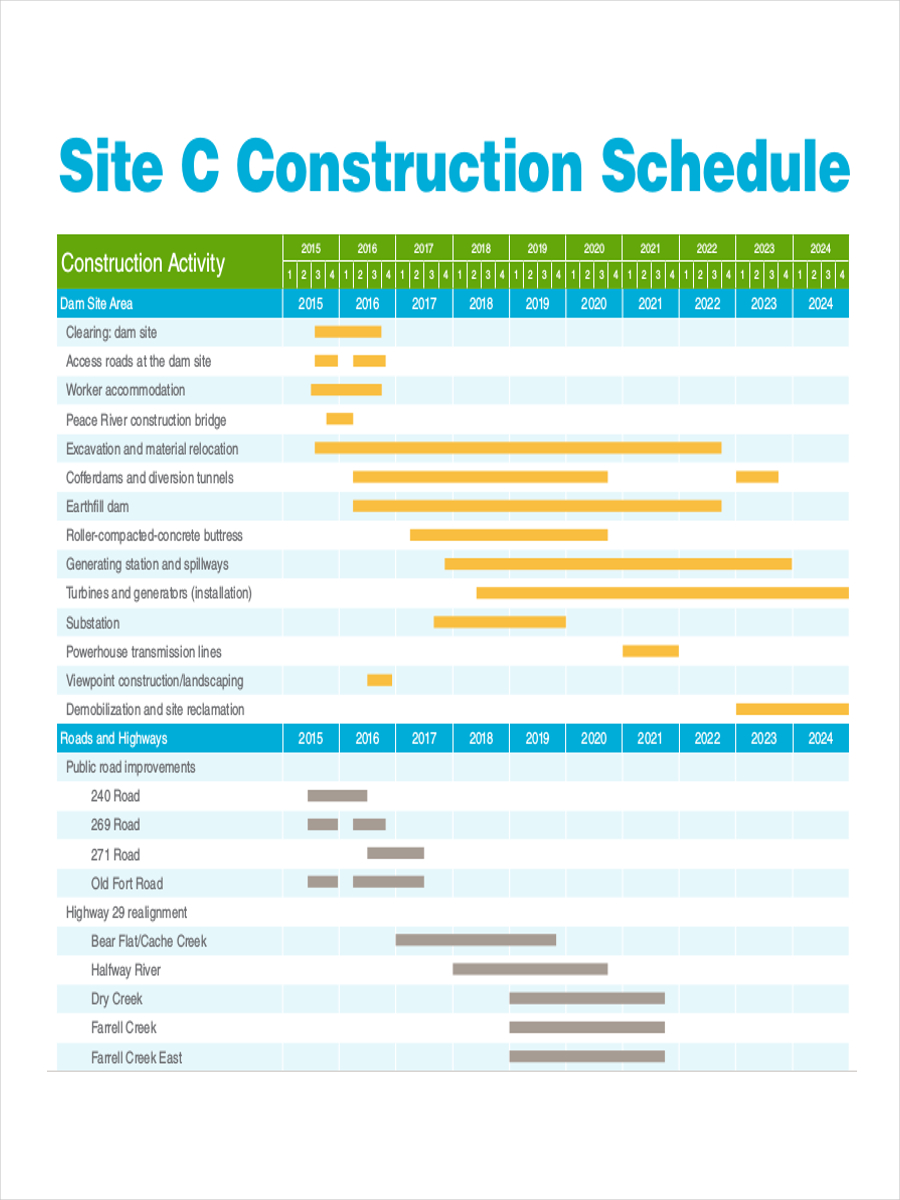38+ Construction Schedule Examples to Download
Infrastructure developments are often funded with millions and probably even billions depending on a budget of the project. Therefore, it requires lengthy preparations and overnight brainstorming on how it could be done. Engineers, architects, and project managers come together to make the construction project a successful one. As a part of the preparations, a schedule should be drafted and appropriately arranged. This, not only, contribute independently but also cooperatively for the success of a project. Perhaps, you might want to check some construction schedule examples below for your reference.
38+ Construction Schedule Examples
1. Construction Schedule Example
2. Commercial Construction Schedule Template
3. Residential Construction Schedule
4. Construction Payment Schedule Template
5. Construction Work Schedule
6. Construction Project Schedule Template
7. Residential Construction Project Schedule Template
8. 5-day Construction Project Schedule Template
9. Construction Schedule Template
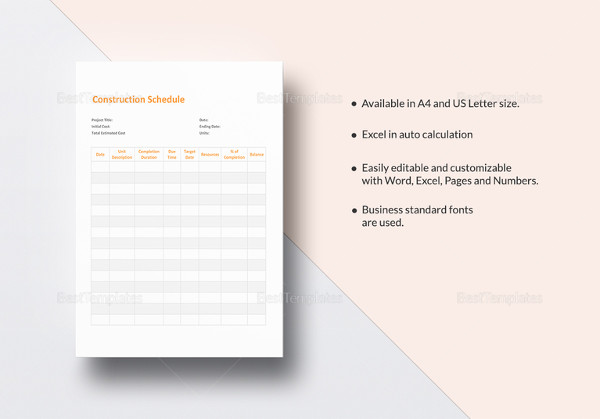
10. Construction Payment Schedule Template
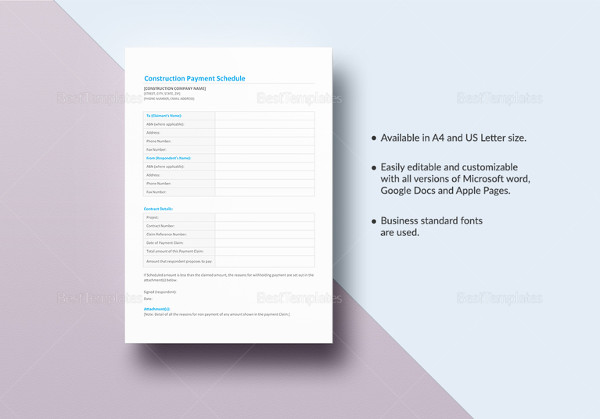
11. Project Schedule Template
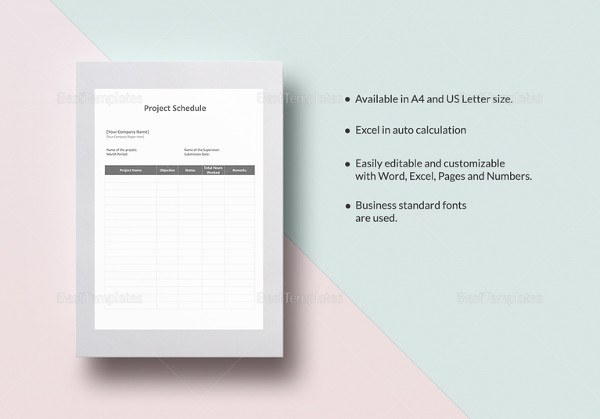
12. Blank Schedule Template
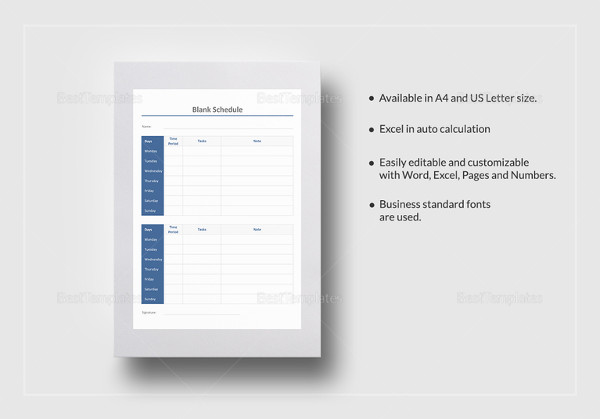
13. Free Basic Construction Schedule Template
14. Free Construction Payment Schedule
15. Free Simple Construction Schedule Template
16. Printable Construction Schedule Template
17. Sample Construction Schedule Template
18. Commercial Daily Construction Schedule Template
19. Weekly Commercial Construction Schedule Template
20. Sample Residential Construction Schedule Template
21. Small Construction Schedule of Values Template
22. Three-Week Construction Schedule Template
23. Weekly Residential Construction Schedule Template
24. Construction Schedule Gantt Chart Template
25. Blank Construction Schedule Template
26. Weekly Construction Schedule Template
27. 7-Day Commercial Construction Schedule Template
28. Daily Construction Schedule Template
29. Two-Week Construction Schedule Template
30. Construction Project Schedule
31. Construction Development Schedule
32. Road Construction Schedule
33. Schedule for Residential Construction
34. Fast track Construction Schedule
35. Building Construction Schedule
36. Construction Management Schedule
37. Construction Contract Payment Schedule
38. Schedule for House Construction
39. Sample Construction Schedule
What Is a Construction Schedule?
A construction schedule is an essential document prepared and drafted, containing a detailed description of the steps and actions. This is to be taken in a developmental plan of a building project or any structure.
How Schedule Affect the Construction Budget
A house renovation or residential construction is a big project. Homeowners and general contractors undergo a deliberate assessment to ensure everything will run smoothly according to the construction project plan. Because the final steps of home construction cost almost $21,000, according to a report released by the National Association of Home Builders (NAHB), it is substantial to follow what’s in the plan. Especially concerning the schedule, an extension to the construction timeline will dramatically affect the allotted budget. Therefore, having a comprehensive, accurate, and useful schedule can stop additional costs from coming in.
How To Make a Construction Schedule
Drafting a construction work schedule is almost the same as preparing a project schedule. Checking and revising every detail is substantial. And to help you through, we list down four easy steps that you can consider. Continue Reading.
1. Familiarize the Tools and Process
When writing a construction project schedule, know that making it becomes easier when you familiarize the process and tools. For commercial buildings, begin by gathering correct details of the client requirement. Tools for such a project would primarily include ceramic tiles, glass windows, and paints. Complete it by drafting a work plan that contains the list of step by step procedures. Once you and your team get to familiarize them, you can accurately determine how long the project will take to finish. Thus, it would result in a more precise breakdown of cost.
2. Collect the Prioritized Tasks
After gathering the necessary information about the project, it’s time to break down the steps. Here, it would be best to put the task priorities at the top. Most of these start with a construction risk assessment through inspection, such as in the electrical and water source. Therefore, you have to come up with a construction checklist where you can track your progress. Through this, knowing your priorities keeps you focused.
3. Add Duration
But most importantly, aside from listing down the tasks alone, you have to be very careful when putting a time duration. In each task, calculate how long it will take. Do gutter installations usually finish four hours? But you can also allot two straight days for the wallpapers or wall paintings. Remember, the length of time is dependent on the type of task. If the light installation only takes a day, ensure finishing it on time to avoid affecting the financial plan. If an extension is necessary, it could entirely affect the client’s budget.
4. Include Intervals and Execute
In your schedule planner, complete it by putting intervals in between work hours. Labor workers need to rest, so place at least one hour of the break for lunch, and afternoon breaks. Securing this will help the workers execute the tasks correctly and right on time.
FAQs
What is the importance of a schedule?
Scheduling is significant because it helps in planning for the activities and achieving it right on time. It keeps users motivated to do essential tasks without any delay.
How do you define a schedule management plan?
A schedule management plan is a method of establishing and organizing policies and documentation of planning. It creates guidance on how to go about the project.
What are the elements of a schedule management plan?
A schedule management plan includes reports, tools, update frequency, progress feedback, roles and responsibilities, and schedule integration.
Indeed, constructing a new home or work office takes time and effort to be successful. Part of that is proper planning and scheduling to make sure it finishes on time. To develop an appropriate timetable, you must understand what the project is. Then, follow the list of tips above to come up with a good construction project outcome.




